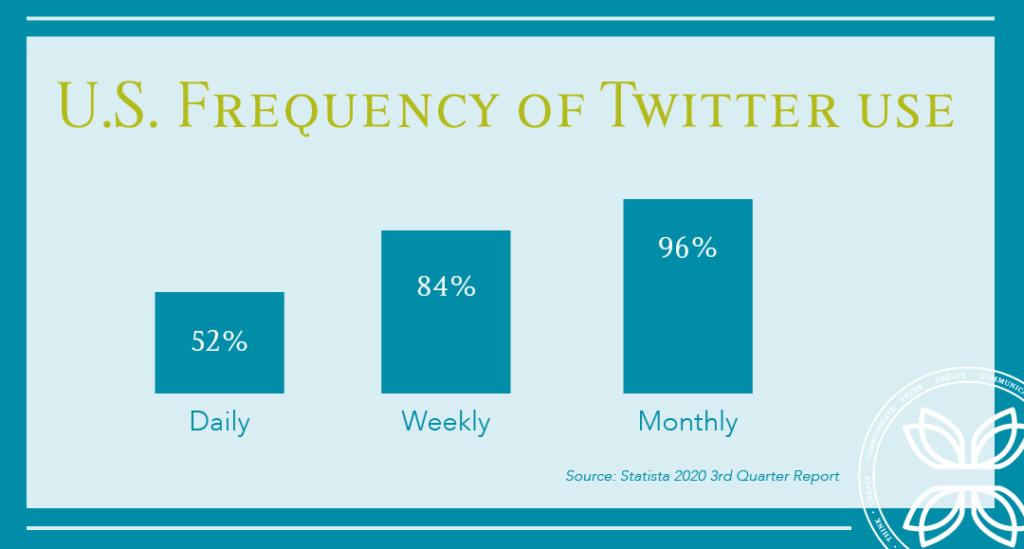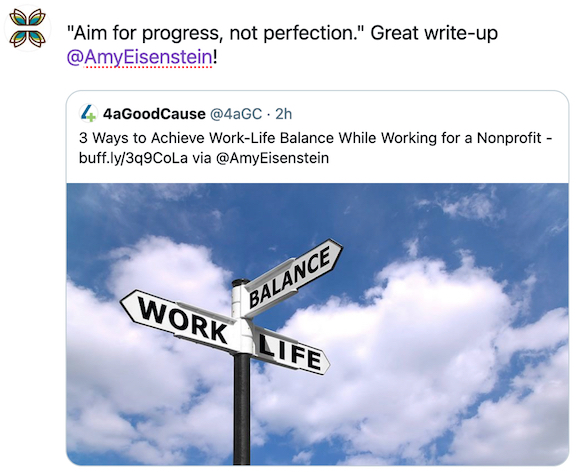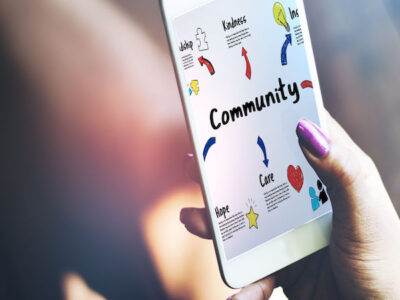Engagement is key on any social media channel although sometimes, when it’s a channel that is new to us or one that we don’t use on a personal level, it can be daunting. Using Twitter is a great way to grow your nonprofit’s reach and engagement. If you are new to the platform or struggle to find ways to use Twitter, read on for nonprofit Twitter engagement ideas.
The growth of Twitter
More than half of U.S. Twitter users log on to the platform on a daily basis. The platform is heavy on male users (70%) versus female users (30%) and nearly 60% of users say Twitter is where they get their news. During 2020, the COVID-19 pandemic was a large part of the reason Twitter boomed — growing nearly 9% up from a pre-pandemic prediction of 2.8%.
Twitter use across generations
Eighty percent of Twitter users are between the ages of 18 and 49 years old with the largest demographic (28.9%) between 25 and 34 years old.
When vetting the right social media platform for your nonprofit, demographics matter. Who are you trying to reach from a donor, volunteer or service recipient perspective? Do those demographics match up with the demographics on said social media platforms? If you are trying to engage and establish relationships with younger donors, for instance, could Twitter be a place to do that?
Likewise, with such a large percentage of Twitter users saying it is a valid news source for them, how are you using this information to connect with media outlets and publications? Are the partners you’re working with to spread the message about the great things your nonprofit is doing active on Twitter? Can you engage with them there online? Tag and mention them in posts? Share their content?
Think through these aspects before diving in and then, consider how you can use Twitter in different ways to engage various segments of your audience.
10 ways to use Twitter for nonprofit engagement
1. Host a Twitter Space
In short, a Twitter Space is a live audio conversation you start online. You can only start (host) a Space via your phone (no web capabilities yet) and Spaces are public so anyone can join. Spaces can be scheduled up to 14 days in advance or done impromptu. There is no limit on the number of listeners. Twitter Spaces can be a great way to debut new information, give fundraising campaign updates or schedule regular chats with your executive director.
2. Monitor conversations
It’s not enough to be tweeting out; once you start, you need to set up a process for monitoring engagements and conversations. I recommend SproutSocial as one such platform. Designate a person (or people) on your team to monitor Twitter on a daily basis. In doing so, you can look for trending topics, conversations happening around your cause, newsworthy items to share, etc. Daily monitoring also gives you great insight into your followers–what they enjoy, share, talk about, dislike, support, etc.
3. Retweet content
Sharing information from others is a big part of the Twitter game. As you monitor content and conversations, retweet information from key accounts or those that are sharing valid points and articles that your audience would appreciate. While you can certainly hit the ‘retweet’ button and share direct, a great best practice is to add a comment or thought with the retweet. To do so, choose the ‘quote tweet’ option.
Here’s an example:
I enjoyed this article that 4aGoodCause shared and it is relevant to our audience as we work with many nonprofits. So, instead of a straight retweet, we shared it from the Allee Creative Twitter account using a quote from the article itself and a kudos to the original author.
4. Use hashtags for P2P giving
Walk-a-thons, read-a-thons, dance-a-thons … whatever peer-to-peer giving campaign you have, use Twitter and designated hashtags to encourage participants to showcase their activity and donations around the event. The hashtag doesn’t have to be channel-specific. In fact, if you have a hashtag dedicated to your P2P campaign, ensure that everyone on your team (and marketing teams) know that it can (and should) be used on Instagram, LinkedIn, Facebook, Twitter, etc. throughout the campaign. Set a system to monitor the P2P hashtag and engage with those using it throughout the campaign. Design your visual elements with the hashtag included as well so everyone is aware of it. You can even include that information on your online giving pages or the P2P donor page set-up process and instructions for team leaders and volunteers.
5. Follow topics
Twitter has made it easier to follow topics by using the search function. If topics are available to follow, you will see them recommended after you have searched for a particular phrase. For example, if I want to keep tabs on all-things fitness, when I search ‘fitness’ in the Twitter search bar, it provides me with the recommendation to follow this topic, personalizing my Twitter newsfeed.
You can look for recommended topics to follow or edit current topics that you’re already following in your topics area (username/topics). Topics are a helpful way to understand what others are talking about or interested in, and can provide an opportunity for you to be a part of those conversations by retweeting or replying to discussions.
6. Create a content calendar
Twitter is a fast-pace social media channel that requires consistent upkeep. Develop a process for scheduling or planning certain pieces of content and engaging in real time for others. Organize and plan your Twitter content with these content calendar examples.
7. Develop source lists
Create a running list of trusted sources (I like to use an Excel spreadsheet or Google Sheet) along with corresponding Twitter handles. As you plan your content each month, revisit this list to see what the hot topics are, trends in conversations or to gather ideas for accounts to engage with and retweet. Key donors should be on these source lists as well; you want to engage with them and show them love on the channels they use, Twitter included.
8. Engage with donor accounts
Give shout-outs to donors on Twitter when donations come in. Even better, use your donor CRM (or source list, mentioned above) to track Twitter handles of key donors or partners and coordinate with your marketing department to engage with those accounts online. Wish them happy birthday, happy Mother’s Day, comment on a fun picture they share, etc.
9. Launch a Twitter contest
Twitter contests are a fun way to get people engaged and give away things like branded Tshirts, hats, a free registration to an upcoming gala or 5k, etc. Some ideas include:
- Retweet to win
- Reply to win
- Tag a friend for an entry
- Tweet a creative response to a question
- Share a picture (include contest hashtag)
Ensure that if the contest is on Twitter, that the only ways to ‘enter’ are on Twitter (don’t, for example, ask people to enter by sending an email). If the contest is channel-wide, be sure to communicate that to all and have a solid way to monitor responses in order to choose winners.
10. Segment using Twitter lists
Twitter lists give you the opportunity to customize your timeline, connect with certain accounts or prioritize tweets. You can create your own Twitter lists, follow Twitter lists created by others or pin lists for easy access. Twitter lists can be public-facing or private.
Additional ways to use Twitter
The content you produce on your nonprofit blog, enews or video channels are also ripe with Twitter opportunity. Check out these additional ways to use Twitter as a nonprofit for ideas around content promotion, holidays and fun imagery.
How can we help? Digital content strategy and creation are just two of the services we provide to our clients, including nonprofits. Get in touch and let’s talk about how we can support your digital marketing needs to move your nonprofit to the next level.









